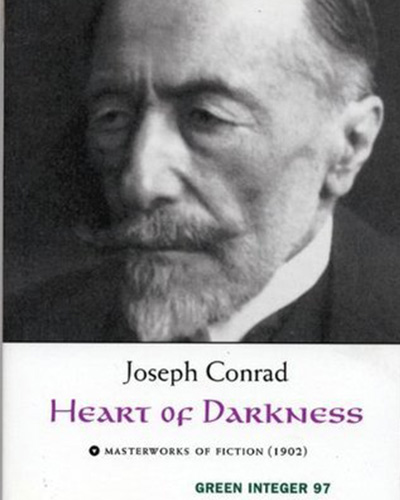
| Language | From $0.00 |
| Release Date | January 1, 1899 |
| Genre | Classics |
| Author | Joseph Conrad |
| File Size | Green Integer |
| Rating | (4.01) |
“Heart of Darkness” tells the story of Charlie Marlow, a British sailor who ventures into the African Congo during the height of European imperialism. Tasked with retrieving the enigmatic Mr. Kurtz, Marlow’s journey takes him deeper into the heart of the continent and forces him to confront the darkness that lies within humanity.
Published in 1899, “Heart of Darkness” was heavily influenced by Conrad’s own experiences as a steamboat captain in the Congo. The novella serves as a critique of the brutal colonial practices of the time, as well as a meditation on the dark aspects of human nature that these practices exposed.
Marlow is the protagonist and narrator of “Heart of Darkness”. As a seasoned sailor and adventurer, he is driven by curiosity and a desire to understand the world. Throughout the novella, Marlow’s perceptions of Africa and its inhabitants evolve, ultimately leading him to question the foundations of his own beliefs and values.
Kurtz is an enigmatic character whose reputation precedes him. Initially described as a brilliant and charismatic leader, Kurtz’s true nature is revealed as Marlow gets closer to him. Kurtz represents the darkness that lies within humanity, as well as the potential for corruption that comes with unchecked power.
“Heart of Darkness” serves as a critique of the European imperialism of its time, exposing the brutal treatment of the African people and the exploitation of their land and resources. Through Marlow’s journey, the reader witnesses the destruction and suffering caused by colonial greed.
Throughout the novella, the concept of darkness is used to represent the darker aspects of human nature, such as greed, cruelty, and the capability for evil. As Marlow ventures deeper into the heart of Africa, he encounters increasingly disturbing revelations about the true nature of humanity.
The novella explores the idea that the veneer of civilization is thin and fragile, with even the most enlightened individuals capable of descending into savagery. This theme is exemplified by Kurtz, who is initially portrayed as a paragon of European values but is ultimately revealed to be a monstrous figure corrupted by power.
“Heart of Darkness” employs a frame narrative structure, with Marlow recounting his journey to a group of fellow sailors. This technique allows Conrad to explore the themes of the novella from multiple perspectives and adds a layer of complexity to the storytelling.
Conrad employs numerous symbols throughout “Heart of Darkness”, including the river, which represents the journey into the unknown, and the fog, which symbolizes the obscured line between good and evil.
Conrad’s dense and evocative prose adds to the atmospheric nature of the novella, immersing the reader in the oppressive environment of the Congo and the psychological turmoil experienced by the characters.
“Heart of Darkness” has been both lauded and criticized since its publication. While some critics praise its exploration of human nature and the human condition, others argue that the novella perpetuates racist stereotypes and dehumanizes the African characters.
“Heart of Darkness” has been adapted for various media, including stage, radio, and film. Perhaps the most famous adaptation is Francis Ford Coppola’s 1979 film “Apocalypse Now”, which relocates the story to the Vietnam War. The novella has also influenced numerous other works, including T.S. Eliot’s poem “The Hollow Men” and the video game “Spec Ops: The Line”.
“Heart of Darkness” remains a powerful examination of the darker aspects of human nature and the consequences of unchecked power. Its lasting impact on literature and popular culture serves as a testament to the enduring relevance of Conrad’s exploration of these themes.